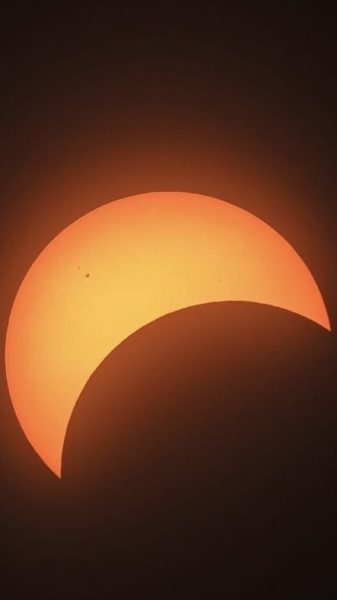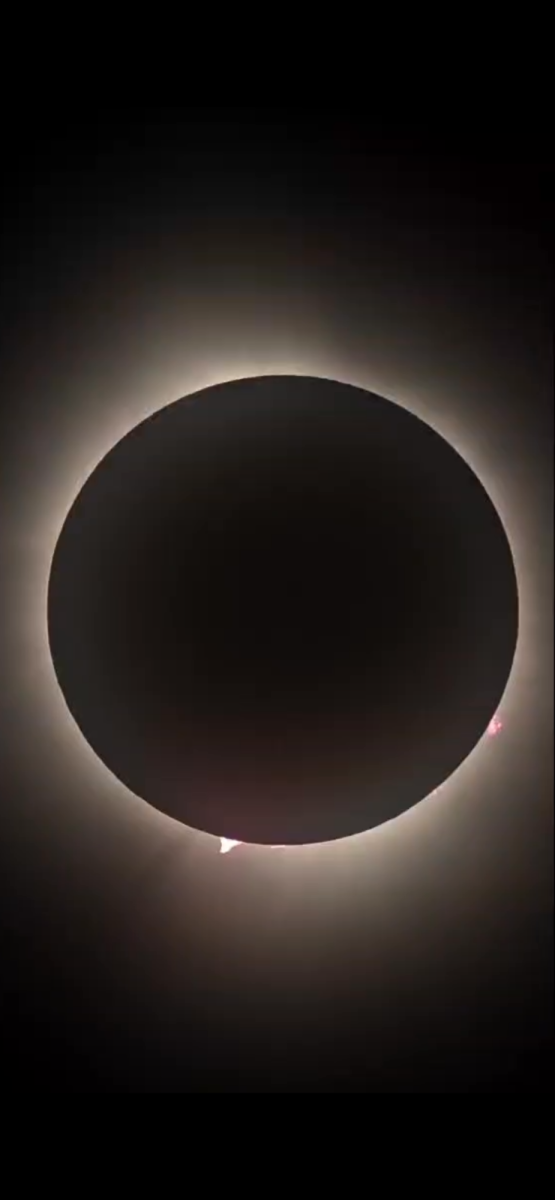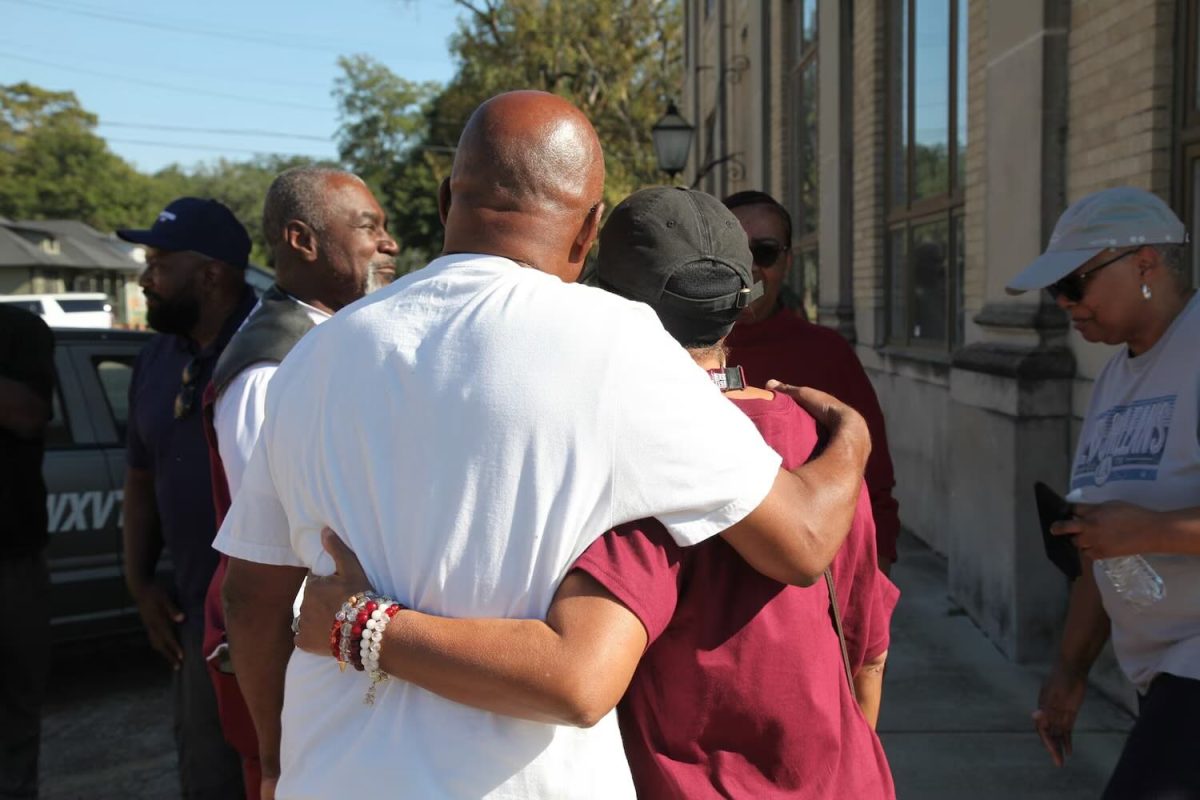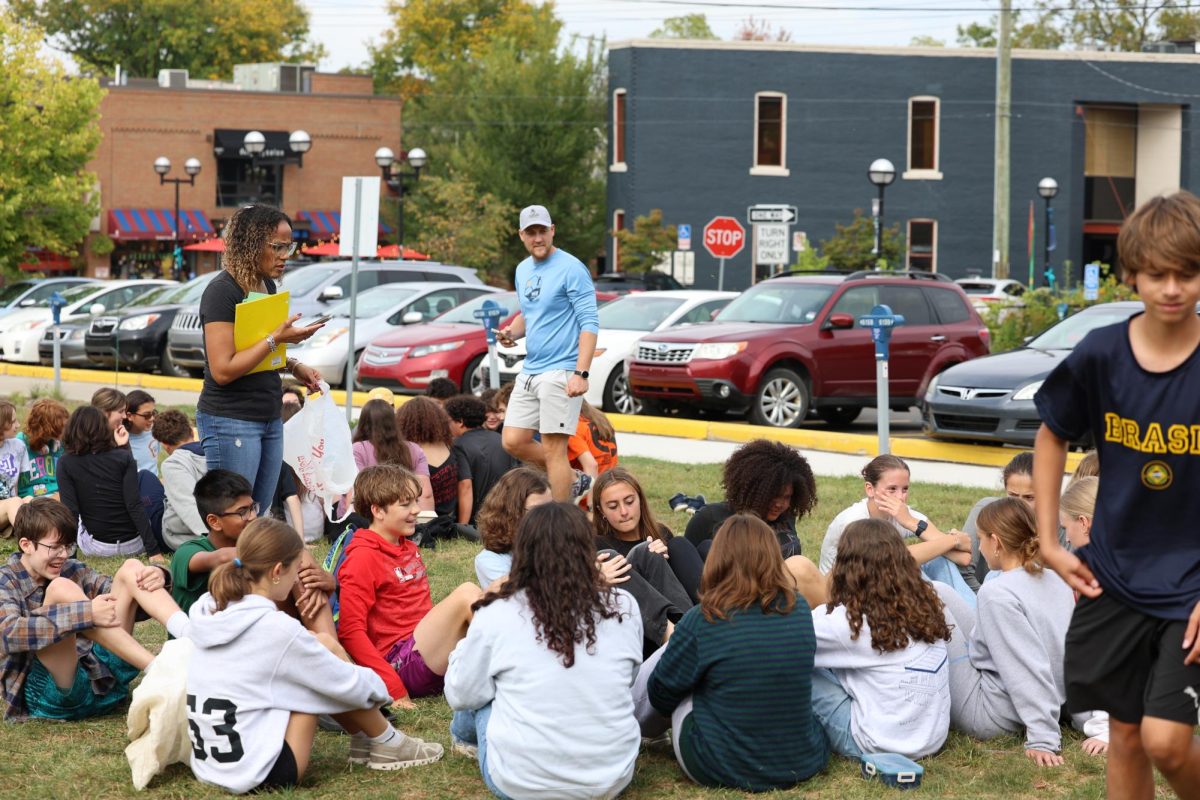It’s a sunny day in Cleveland Ohio, on April 8, 2024. Apart from the people gathering in fields and the traffic on the roads, you wouldn’t be able to tell that the most significant cosmic event in the world was about to occur. The students of Case Western Reserve University all gather for an eclipse viewing party but on the outskirts of the campus, a man and his wife sit looking over a calm lagoon. The man’s name is Tom Keeney an astrophotographer, whose 54th birthday just so happens to be today.

The eclipse on Monday was classified as a hybrid solar eclipse. These differ from annual solar eclipses; the moon is too far away from the Earth for the moon to fully obscure the sun, creating the effect that the sun is darkening. This Monday’s eclipse was a hybrid eclipse, so most parts of the world experienced a partial solar eclipse. But there is an area roughly 155 miles across where the sun is completely blocked. This area is called the path of totality. And for the first time in 218 years, the city of Cleveland is on that path.
“Seeing this [eclipse] has been a long-time dream of mine,” Keeney said. “It’s great to see the excitement growing here.” Keeney is keen on capturing pictures of this eclipse, and the corona. Which is only visible during a total eclipse. “It’s really amazing I’m able to capture these pictures at all,” Keeney said “We’re just so lucky to have such a wonderful moon.”
He explained that the sun is about 400 times bigger than the moon. This is odd in itself, normally moons are much smaller. The strange part is that the moon is also 400 times away from the sun. Any larger or smaller closer or farther the moon would cover up the sun completely or the sun would still be bright enough to block out the moon. But for some reason every once in a while the whole sun gets blocked out except for the very outer edge, giving you that beautiful view of the corona.
“It affects the tides and I mean, there are some folks that think that without the moon and the way it stabilizes the Earth’s orbit and rotation,” Keeny said “Life was able to develop here that wouldn’t have otherwise… but who knows? I just like to look at it.”

As the hours drone on, the fervor only grows and people begin to gather on the Cleveland streets. Most of the people here have traveled at most three or four hours to see the event, but Dave Starling, 76, has traveled seven hours by plane.
“I’ve seen one eclipse, the one I’ve seen was 99 percent [totality]. That was in 1954. I was six and all the little kids were lined up in the playground at Booth School and given micro slides to look through and put wax on them from candles. And the kids were told not to smudge it and to look through it. Can you imagine what people would say today? But how many of those little kids can still see I don’t know.” Starling said.
On the camera there is a large red dot towards the bottom of the sun, Starling explains to me that the red dot is a solar prominence and that It’s about five or six sizes bigger than the Earth. A solar prominence is a sunspot that is at the point of spewing out mass ejections. In the summer of 1851, one of those mass ejections came straight for the Earth. At the time, the technology was telegraph, and telegraph operators were electrocuted. The aurora went right down to the equator. It looked as if the sky was red on fire. All the ship’s compasses just spun and spun, everyone was lost. They called it the Carrington Event.
That is the amount of cosmic radiation that the sun produces, and without solar viewers, the cells in your eyes would burst. Starling, not trusting the ability of corporations to protect his eyes, has taken to creating his solar viewers. “These give me the effect of looking like a mad scientist… which I am,” Starling said.
Just then a shadow came over all of us. There hanging in the sky was the totality. The air cooled instantly, the dogs began barking, the birds stopped singing, and there were screams of joy and awe all around us. “Isn’t that just the most beautiful thing?” Starling said as the sun set in all directions.










